Author:Wu Ming-Che, Livestock Research Institute, Council of Agriculture, Executive Yuan
The robotic milking system (hereinafter referred to as the milking robot) can each serve 60 to 70 lactating cows per day. It has the shape of a large household cabinet like a freezer, which can move around and easily installed. Lactating cows can produce milk in a healthy and stress-free condition. With the use of the milking robot, cows feel comfortable. The milking robot also has been tested and proved to meet the I-flow concept. Its innovative composite robotic arm and the nipple detection system ensure a quick and smooth attachment to the nipples. The I-flow design ensures that the cow does not need to turn in the milking cabinet, so there is no difficulty of entry in the cabinet. The open space design also allows the lactating cow to continue to have partial contact with its herd during milking.
The innovative composite robotic arm stays under the breasts throughout the milking process and moves with the cow. This gives the lactating cow maximum freedom during milking. The innovative composite robotic arm is both electrically and pneumatically powered to make the operation very quiet. This allows the cow to secrete milk without pressure, and attachment to the nipples is quick and accurate.
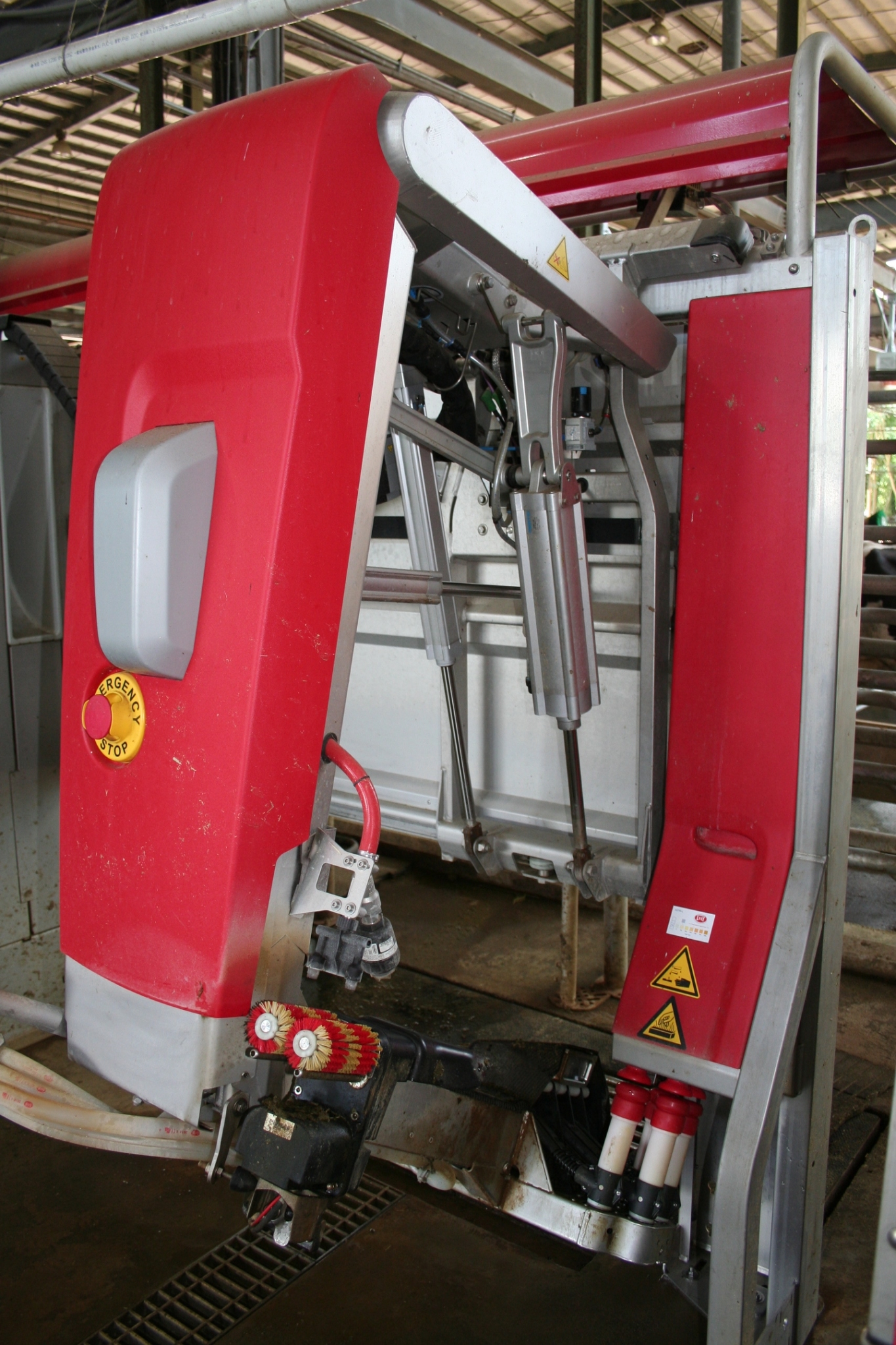 The innovative composite robotic arm features quiet and power-saving milking operation
The innovative composite robotic arm features quiet and power-saving milking operation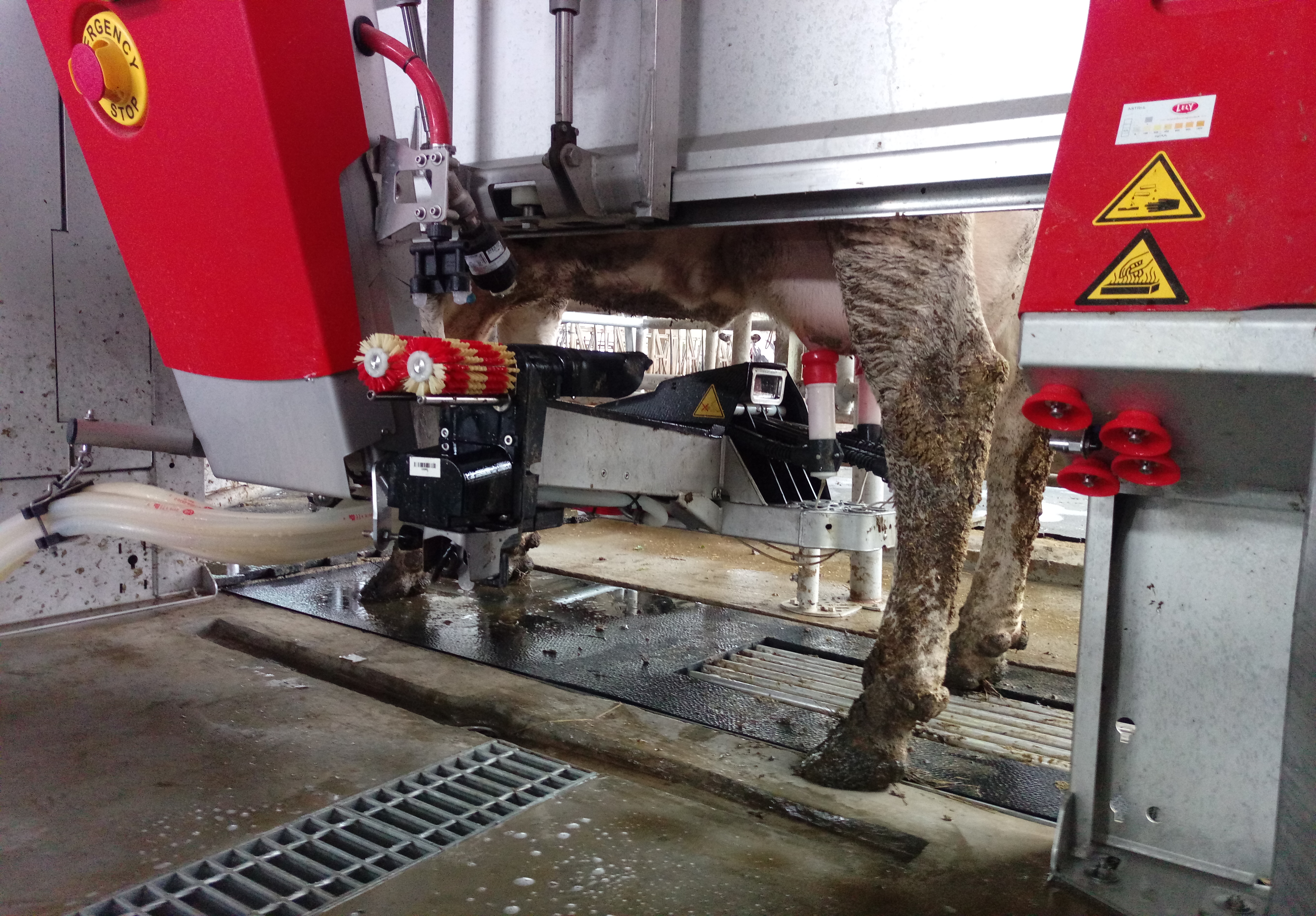 Nipples are brushed clean before the milking cups are attached.
Nipples are brushed clean before the milking cups are attached.The milking robot has an automatic grouping function, to detect cows with mastitis or blood milk based on to pre-set conditions, and divide the cows into separate groups, healthy ones and abnormal ones. It can also divide the cows into different groups based on farm planning and open different entrances for different groups.
The nipple detection system of the milking robot consists of a three-level laser system to detect and attach the milking cups to the breasts. Quick, consistent and accurate operation makes lactating cows feel easy and comfortable. After each milking, the software records the position of the exact position of each breast and nipple, so that the attachment for the next milking operation is quick and consistent.
The milking robot will do pre-expressing to each breast before the formal milking operations. This is to examine the health status of the breast and the milk quality. Cows with abnormal conditions will be directed to the group isolation area. During the milking process, conditions of the milk, including the milk temperature, blood milk, electrical conductivity and somatic cells can be detected to control the quality of milk. The milking robot also has a milk sampling function, which keeps the milk sample in each operation.
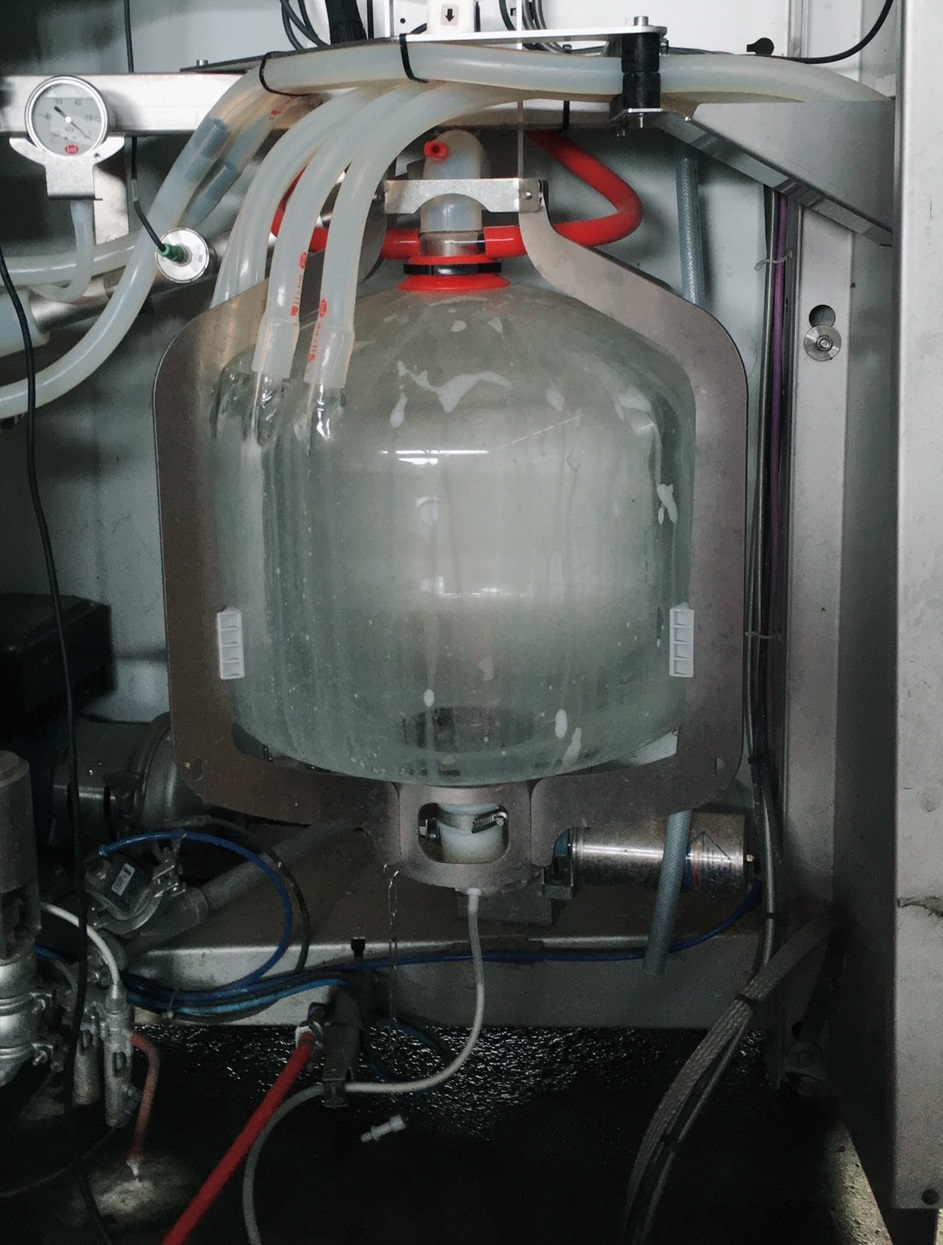 The internal milking cylinders express the milk from the four breasts, mix it, and send it to the storage bucket. The bucket is automatically cleaned after each milking.
The internal milking cylinders express the milk from the four breasts, mix it, and send it to the storage bucket. The bucket is automatically cleaned after each milking.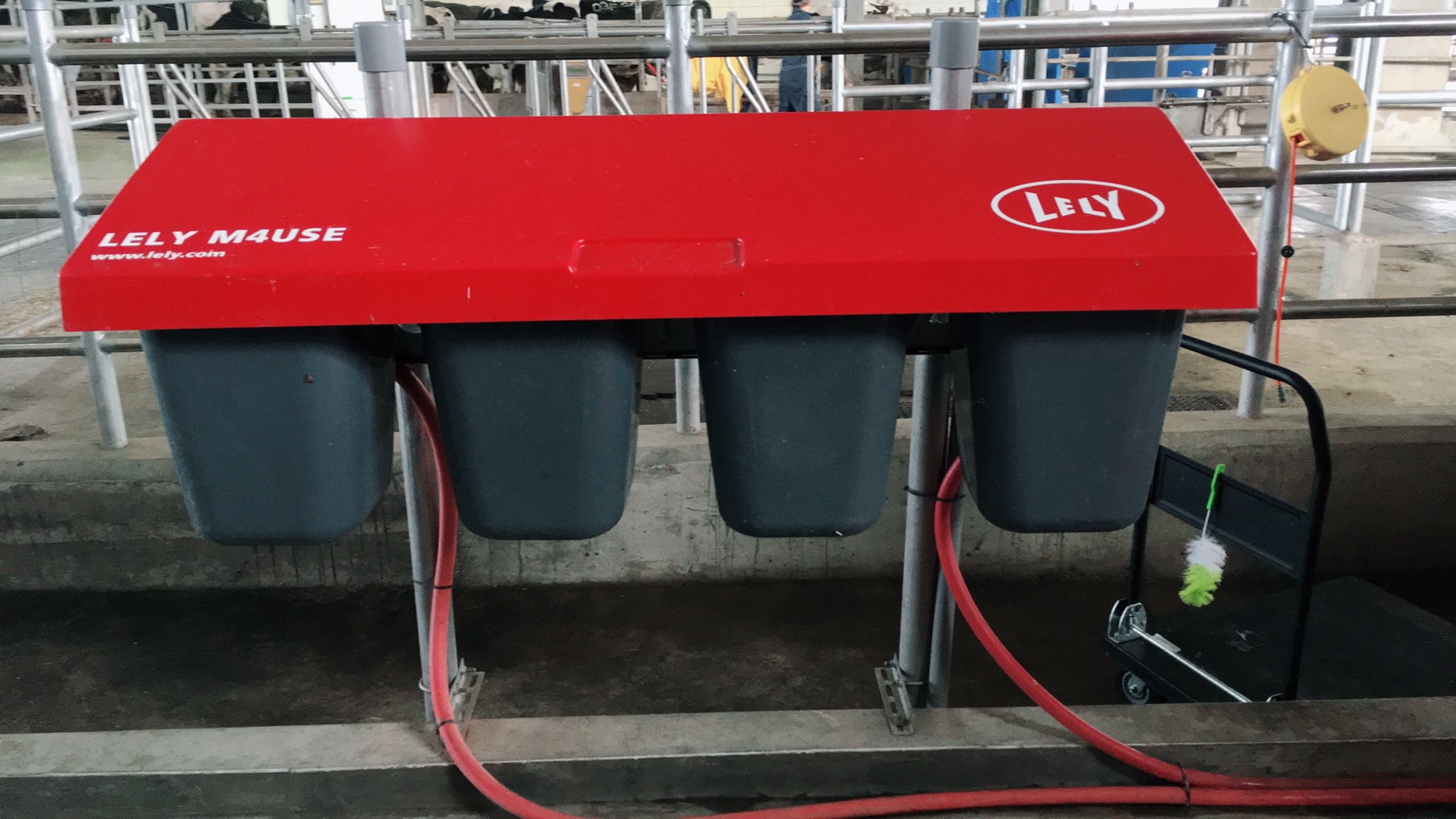 Milk of cows with mastitis or that of poor quality is collected in a 20 liter-bucket for abnormal milk
Milk of cows with mastitis or that of poor quality is collected in a 20 liter-bucket for abnormal milkThe introduction of the milking robot means the saving of 12-hour workload a day. The saved time can be used more freely by the farm owner. The milking robot also increases the number of milking times on each lactating cow, leading to higher milk production. The higher frequency of cows’ physical movements due to milking also helps improve the mastitis and hoof health conditions of the cows. The capability of monitoring of individual cows has also improved the efficiency of the farm management. By the first half of 2019, the milking robot has been introduced to three dairy farms in Taiwan. The average daily milk production per head has increased to 33 kg, and the average milking frequency is about 2.9 times per head per day. The higher milk production means higher income.
One of the purposes of using milking robots is to achieve a significant reduction in the production cost per kilogram of milk. With intelligent, advanced technology and unique compound robot arm, it can help dairy farmers produce high-quality raw milk at low cost. The unique compound robot arm lowers the consumption of detergent and water, and reduces energy consumption by up to 20%.
The milking robot uses high-quality parts and has extended running time and a long service life. In addition to the reduction of costs of servicing and maintenance, the milk production cost per kilogram is also substantially lowered.
The central control system of the innovative milking robot allows technicians to perform maintenance quickly and safely when necessary. This high-reliability, easy-to-maintain design helps achieve higher return on investment in a shorter period.
The shrinking demand of labor force has helped ease the problems of labor shortage, high turnover, and management difficulties on most farms. It has also reduced the cost of labor. Most importantly, the saving of manpower allows dairy farmers to arrange their time more flexibly, and the high quality and reliability of the milking robot leaves the dairy farmers with no worries.
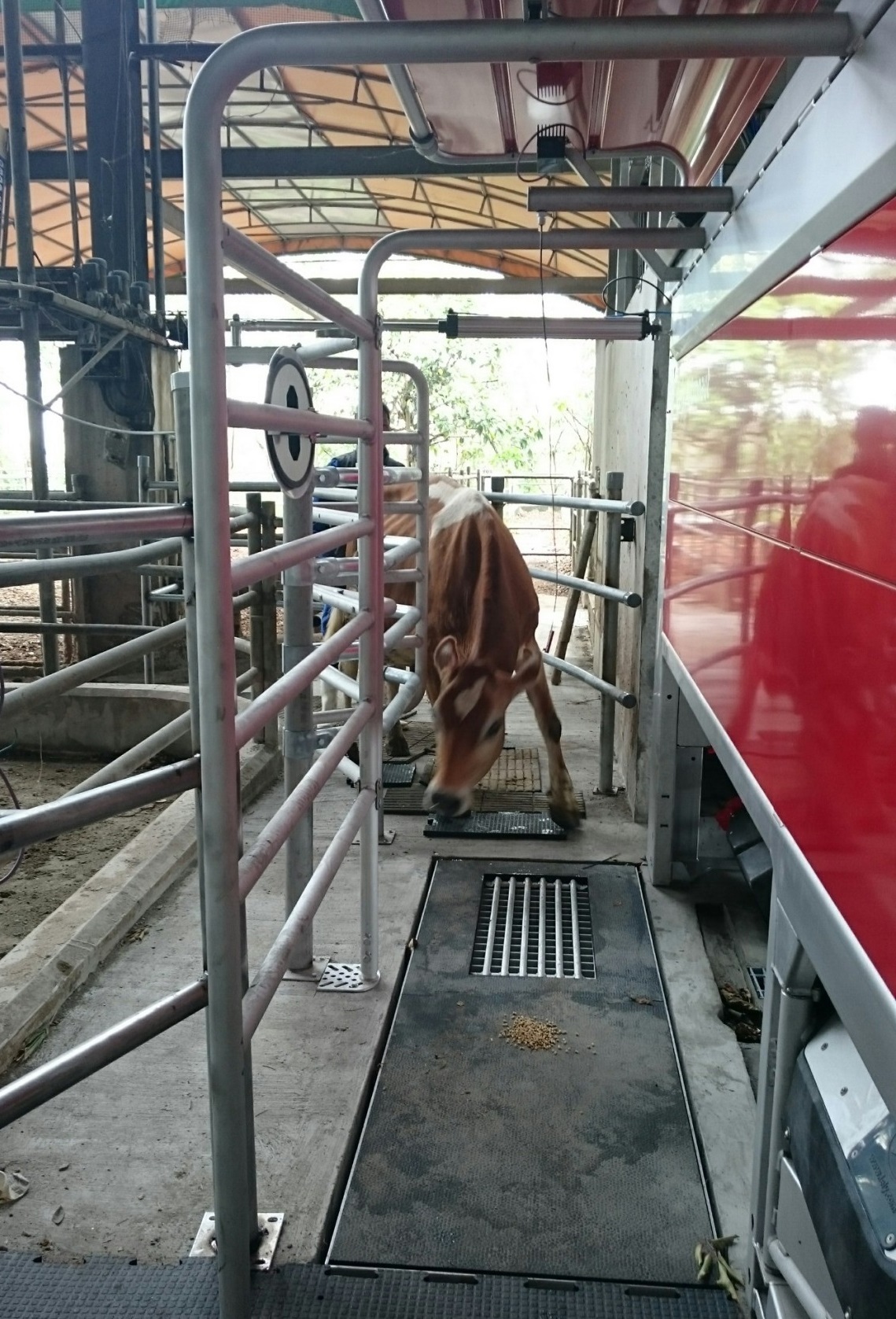 The milking channel has a built-in weighing scale incorporated. The integrated T4C software system constantly monitors the weight of the lactating cows
The milking channel has a built-in weighing scale incorporated. The integrated T4C software system constantly monitors the weight of the lactating cows